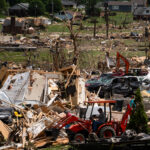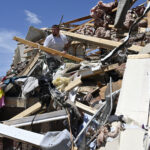As more winter storms approach California, homeowners in fire-ravaged areas are cautioned to guard their homes against the destructive power of flash floods, according to the Insurance Information Network of California. Recent fires have reportedly stripped hills of natural vegetation, raising the potential for catastrophic losses.
Most homeowners insurance policies reportedly protect against rain and wind damage and burst or frozen pipes, but damage caused by flooding is covered only through a flood insurance policy. By taking a few simple precautions, homeowners can protect their property and prevent storm damage.
— Place sandbags strategically around the property to help divert natural flows of water from the hills and to protect areas where water could enter the home.
— Learn how to drain swimming pools, and be prepared to reduce the water level as storms approach. Water damage from overflowing pools is not covered in one’s homeowners policy.
— Inspect any storm drains located on the street near the home. If they appear clogged or congested, report them to the city’s public works department.
— Inspect the trees on the property. Remove or cut back any branches that are rotted or could fall on the house.
— Inspect the roof for leaks and have them repaired immediately.
— Check the water pressure level in the house. If the level is too high, it could cause cold pipes to burst.
Though flood insurance is not included in a standard homeowners policy, it can be purchased through one’s agent from the National Flood Insurance Program. Premiums start as low as $300 for every $100,000 in coverage. While flood insurance can be purchased at any time, there is a 30-day waiting period before the coverage takes effect.
Landslides are not covered under a standard homeowners policy or a flood insurance policy. Inspect one’s land, and watch for trouble spots. Contact a specialist if seeing signs of loose soil.
Was this article valuable?
Here are more articles you may enjoy.

 Trump Administration Targets Resiliency Funds to Shrink FEMA’s Role
Trump Administration Targets Resiliency Funds to Shrink FEMA’s Role  Will Workers’ Comp Benefit from ‘Most-Favored-Nation’ Drug Pricing?
Will Workers’ Comp Benefit from ‘Most-Favored-Nation’ Drug Pricing?  Central US Severe Weather Outbreak Caused Billions in Damages, AccuWeather Says
Central US Severe Weather Outbreak Caused Billions in Damages, AccuWeather Says  DIY Home Inspections? They Are Taking Over, Firms Say
DIY Home Inspections? They Are Taking Over, Firms Say 